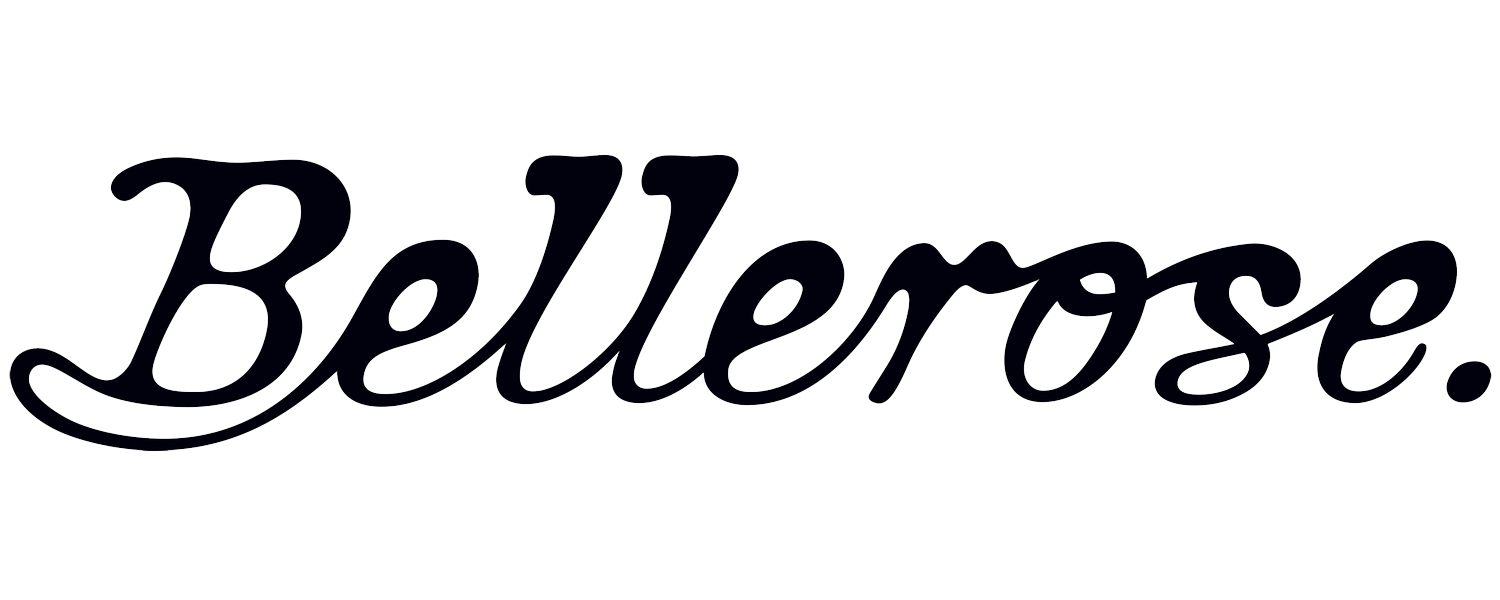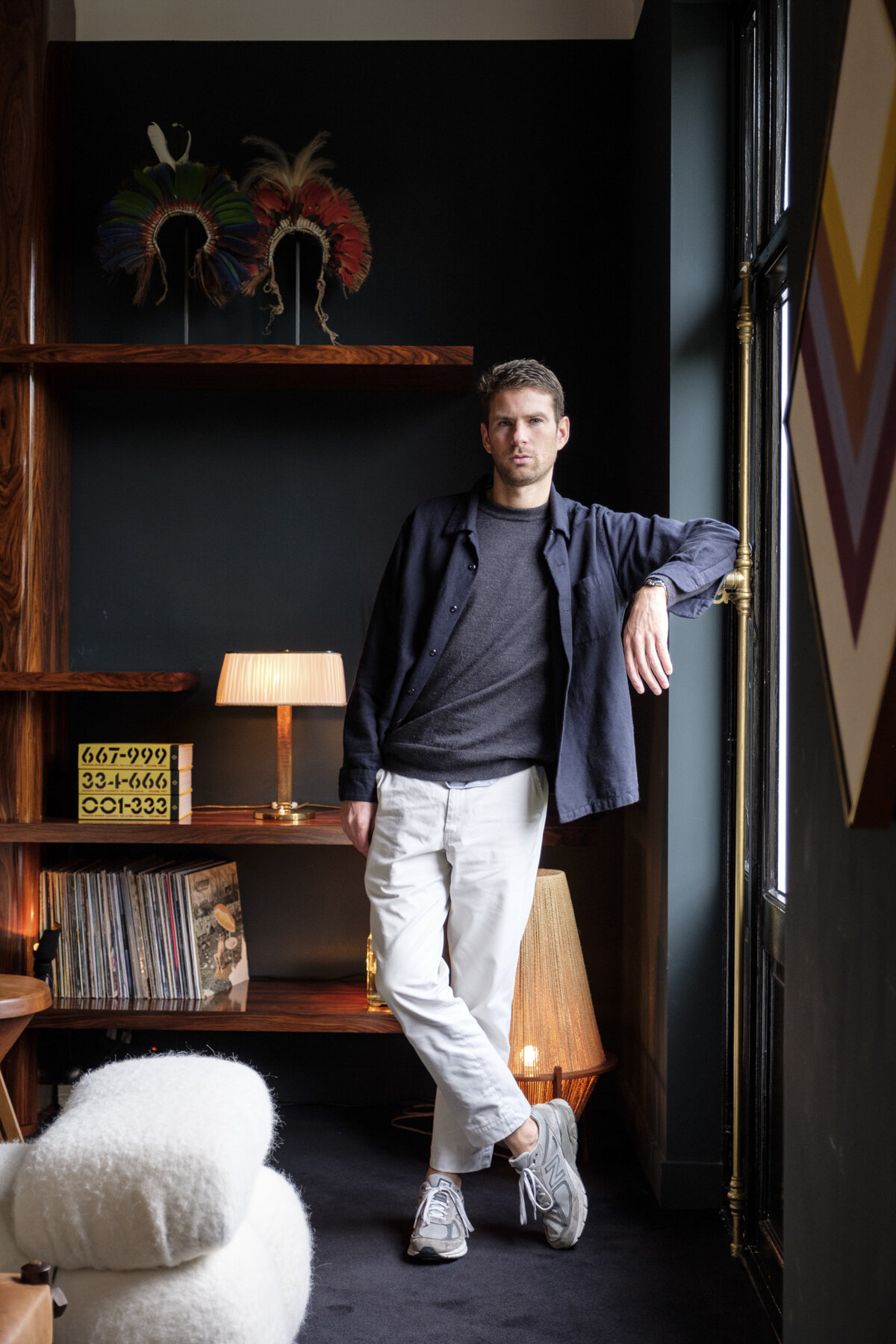A quick glance at Derek’s unique Brussels’ apartment should already be enough to make a few things very clear. As the artistic director for Bellerose, it’s obvious that his love for noble materials doesn’t stop at the clothes the brand creates or the interior decoration of its stores. Authenticity and craftmanship are key. Next to that, the apartment’s dark colour palette allows an eclectic mix of lamps, artworks and design objects to truly shine. It’s a fascinating place full of unexpected, yet deliberate, choices.
“Honestly, there aren’t a whole lot of buildings in Brussels that I find beautiful. When I accidentally stumbled upon this place some three years ago, it immediately charmed me, even if my usual preference goes to buildings from the late 60s or 70s with bay windows and terraces. The big challenge was to make this apartment my own. To turn it from something classic and chic into something contemporary and lively, while respecting the spirit of the building”. Admittedly, the building itself – an edifice from 1927 - is quite majestic. And its location - between the prestigious Avenue Louise (Brussels own Boulevard Haussmann), the burgeoning and bustling Place Flagey and the calm of the Bois de la Cambre - really is something.
It took Derek a while to decide exactly how he was going to proceed. In the end, he decided to start from scratch. Undoing later modifications, he brought the apartment’s structure back to the way it originally was. Out went the parquet floor, in came a thick black carpet in every room, except for the kitchen and bathroom where a marble floor was installed. Out went the white walls, in came a daring dark green. Only the ceilings were left pristine, to add some light.
The different rooms and their sizes are all in line with their functions and the owner’s lifestyle. Not one to cook often, Derek’s kitchen feels more like a bar where you’d grab some coffee or drinks with friends. The living room on the other hand is large and oozes comfiness. Like a hotel lounge without feeling like a hotel at all. And of course, as the brand’s former menswear designer and its current artistic director, a large wardrobe was subtly integrated into the hallway that connects living room and bedroom.
Connecting opposites and playing with contrasts are both key to Bellerose’s DNA. This is reflected in the brand’s clothing, but also in the brand’s stores. Each of those is unique and different from the others, all designed by Derek and his father Patrick, the brand’s founder. With a stubborn vision and unique aesthetic codes, they continue to push forward in an ever-changing fashion landscape. Most recently, the Ghent flagship store was completely renewed, integrating an in-house repair atelier and coffee kiosk, while also offering a more comfortable, roomier shopping experience.
At the same time, elements or experiments executed in stores first, can also be found in Derek’s apartment. “I love working with contrasts. I think juxtaposing varnished rosewood and matt walls works extremely well. Plus, that brilliance also creates a slightly mysterious atmosphere when you can see the reflection of different lamps and lights in it.”
Lamps are one of Derek’s guilty pleasures, no matter if they’re made by renowned designers, like the Hans Agne Jakobsson lamp in the living room, or if they’re obscure finds from Brussels antique stores. That same fondness of mixing and matching can be found throughout every room of the apartment. From the enormous, slightly futuristic framed Vincent Fournier picture in the kitchen, to the iconic modular “Camaleonda” sofa by Marion Bellini or the large, somber canvas by Russian American painter Jules Olitski, nothing about this apartment is obvious or predictable. “I like the fact that very few things about this place are normal. I’ve been a big fan of furniture and art for years. I’ve gone through phases in which I dove into several styles and, in the end, what I love most is mixing all of them. Whether something is African, American or Scandinavian, or whether it was created in the 1960s or 1990s, it doesn’t matter. I think it works when you throw them all together”.
Pictures : Thibault de Schepper
Words : Bjorn Dossche


























